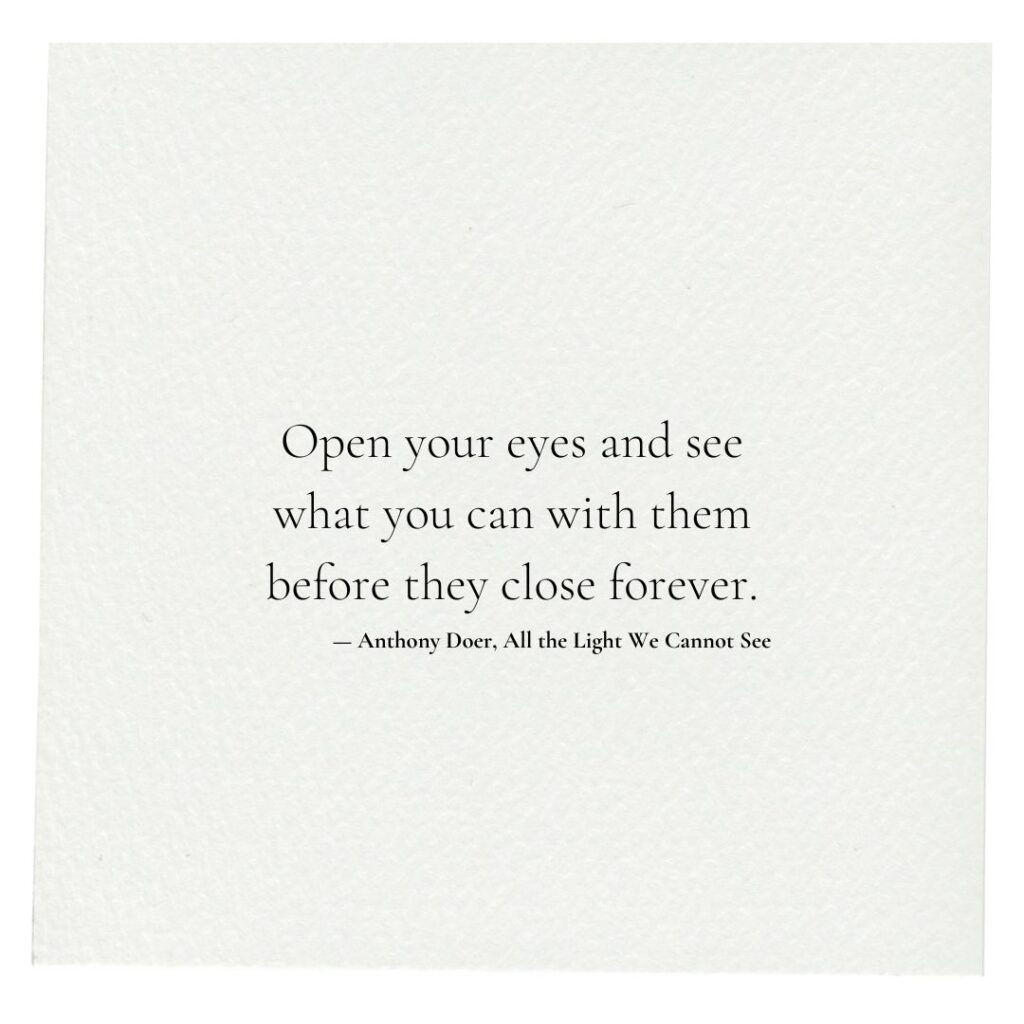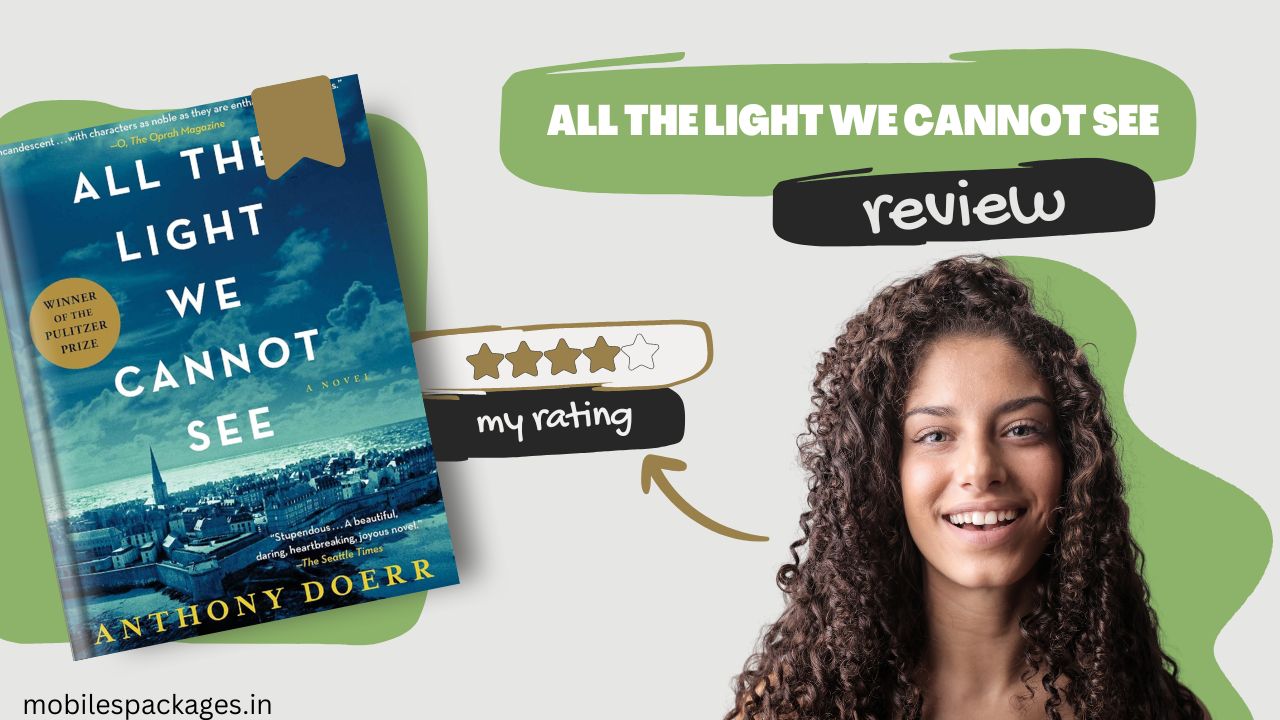Anthony Doerr’s All the Light We Cannot See is a breathtaking novel that masterfully weaves together the lives of two children during the turmoil of World War II. This Pulitzer Prize-winning story immerses readers in the beauty of its prose, the depth of its characters, and the haunting realities of war.
All the Light We Cannot See Book Summary:
The novel follows two main characters: Marie-Laure, a blind French girl living in Paris with her father, and Werner Pfennig, an orphaned German boy with a natural talent for radios. When the Nazis invade Paris, Marie-Laure and her father flee to Saint-Malo, where they carry a dangerous, possibly cursed jewel from the museum her father worked at. In Germany, Werner’s fascination with radios leads him to a place in Hitler Youth, and eventually to the war, where he is tasked with tracking down the resistance.
Doerr deftly weaves their stories together, alternating between past and present, slowly revealing the fates of these characters. The novel is not just about the war, but about the resilience of the human spirit, how we try to be good to each other even when the world is falling apart.
My Thoughts: “All the Light We Cannot See” is more than just a historical fiction novel; it’s a lyrical meditation on connection, loss, and survival. The way Doerr interlaces the lives of Marie-Laure and Werner is captivating, and his prose is nothing short of stunning. Every word seems carefully chosen, making each sentence feel like a work of art. The characters, especially Marie-Laure, linger in your mind long after you’ve turned the last page.
One aspect of the novel that I particularly appreciated was its structure. By alternating between time periods and perspectives, Doerr keeps the reader on their toes, offering small glimpses into the future while keeping the tension high. It’s a slow burn, but one that rewards patience.
About the Author:
Anthony Doerr is known for his lyrical prose and attention to detail, with All the Light We Cannot See standing as one of his most celebrated works. In interviews, Doerr has spoken about how he spent ten years researching and writing the novel, crafting the intricate narrative and ensuring its historical accuracy. His fascination with radio technology and the idea of unseen forces connecting people across great distances heavily influenced the novel’s themes.
Doerr once said: “I wanted to write a book about how people try to be good to each other, even in the midst of horror and destruction.” This sentiment echoes throughout the novel and adds a layer of emotional complexity that resonates deeply with readers.
Historical Context:
Set during World War II, All the Light We Cannot See spans key moments in the war, such as the Nazi occupation of France and the eventual liberation of Saint-Malo. The novel highlights lesser-known aspects of the war, like the role of radio technology and the moral dilemmas faced by young soldiers. These historical details not only enrich the narrative but also give readers a clearer understanding of how the war impacted ordinary people on both sides of the conflict.
Themes and Symbolism:
The novel explores several profound themes, including:
- Light and Darkness: The title itself symbolizes hope amidst destruction. Marie-Laure’s blindness contrasts with Werner’s ability to “see” through radios, and yet they are both searching for light in their own ways.
- War and Innocence: Both protagonists are children caught in the crossfire of a brutal war, symbolizing the loss of innocence.
- Connection Through Radio: The radio plays a central role, representing unseen connections between people. It brings hope, delivers propaganda, and even helps resist the occupation forces. The theme of communication without sight is a recurring motif that ties together the lives of Werner and Marie-Laure.
Comparative Analysis:
While there are many WWII novels, All the Light We Cannot See stands out because it gives us perspectives we rarely see—the experience of a blind French girl and a young boy forced into the Hitler Youth. Compared to books like The Book Thief, which also uses children’s perspectives during the war, Doerr’s novel is aimed at adults and offers a more expansive view of the war’s psychological impact.
Reader Experience Tips:
This novel is over 500 pages long, and its alternating timelines may feel jarring at first. My advice is to take your time, savor the beautiful prose, and allow yourself to be absorbed in the parallel stories. The shifting between characters and timelines is a crucial part of the storytelling, and though it may feel disorienting initially, it builds suspense and reveals the characters’ fates in a deeply satisfying way.
Quotes from the Book:
Here are a few impactful quotes that highlight Doerr’s eloquence:

Open your eyes and see what you can with them before they close forever.
This quote encapsulates the novel’s theme of experiencing life fully, even when surrounded by darkness.
The entropy of a closed system never decreases.
Doerr uses scientific principles to reflect on the inevitability of decay and loss, both in war and in personal lives.
My Rating:
⭐️⭐️⭐️⭐️⭐️ (4.6/5)
Why You Should Read It: If you’re a fan of World War II fiction, but also want something different from the usual fare, this book offers a fresh perspective. It gives voice to characters we don’t often hear from in war stories—a blind French girl and a German boy who isn’t villainized for his nationality but humanized through his internal struggles. The novel’s emotional depth is profound, making it a must-read for anyone who enjoys character-driven stories.
Related Media Links:
- Anthony Doerr’s Interview about All the Light We Cannot See: In this insightful interview, Doerr discusses the inspiration behind the novel and how he developed the characters of Marie-Laure and Werner.
- World War II Documentary on Saint-Malo: Learn more about the historical significance of Saint-Malo, the setting of the novel’s climax.
Recommendations:
If you loved All the Light We Cannot See, you might also enjoy:
The Book Thief by Markus Zusak: A haunting story about a young girl and the power of words during the Holocaust.
The Nightingale by Kristin Hannah: A moving tale of two sisters’ resistance efforts in Nazi-occupied France.
Atonement by Ian McEwan: Though set in a different war, this novel similarly explores childhood, loss, and the far-reaching effects of conflict.
FAQ:
Q: Is All the Light We Cannot See based on true events?
A: While the novel is fictional, it is inspired by real historical events. The Nazi occupation of France, the siege of Saint-Malo, and the use of radios for propaganda and resistance were all real aspects of WWII.
Q: How does this novel differ from other WWII books?
A: Unlike many war novels that focus solely on combat or military leaders, All the Light We Cannot See focuses on the lives of children, showing the war through their innocent and unique perspectives.


















